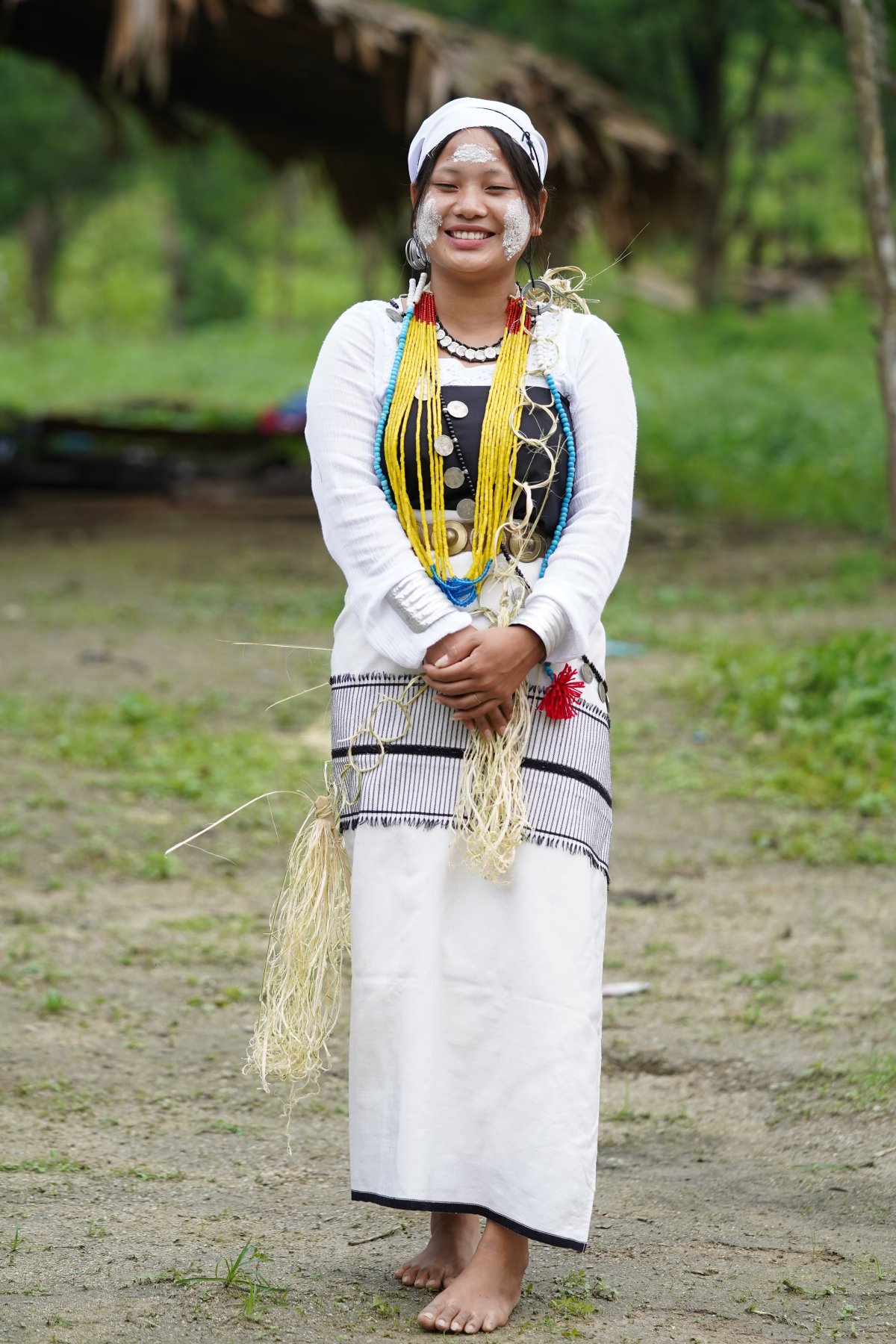tribal clothing and textiles
Popir Dance Costumes and Jewellery, arunachal pradesh

Women wear white blouses and wrap skirts embroidered with red or maroon thread, accessorizing the ensembles with the help of a waistband made of coins and bamboo tufts. They wear long white scarves on their heads falling down their backs, long bead necklaces, and metal earrings.
Traditional food preparation methods include roasting, boiling, fermenting, and steaming; bamboo being an important constituent in the preparation of food. The Galo tribe has other unique rituals like Arr-Rinam and Ali-Ternam to fend off epidemics, wherein the community seals off entry points to the district and barricades the villages with bamboo. The rituals are presided over by a priest (Bos) and the shaman (Nyibo), animals are often sacrificed.
The Galo people are found in districts like West Siang, Leparada, Upper Subansiri, and Lower Siang. They use the language Galo, which was reputedly derived from Proto-Tani. Recently, they developed for their language a Roman-based script called 'Galoo Ennam'.
The Galo tribe, called Galong, is a central eastern Himalayan community of Arunachal Pradesh tracing its descent from Tani group of tribes, whereby some legends trace their lineage back to Abu Tani, their forefather. They rank among the more progressive tribes in the region, with agriculture and animal husbandry being the basis of their subsistence. While they used to practice jhum cultivation, most have now switched to terrace farming.
The Popir dance is a quintessential part of the Mopin festival celebrating the beginning of the farming period. The women dance this when the Nyibu (priest) guides and the Miri sing folk melodies narrating about the tribe's origin. Galos are equally renowned for bamboo work, with them being used to build homes, as well as create several other things including utensils, baskets, and furniture.

